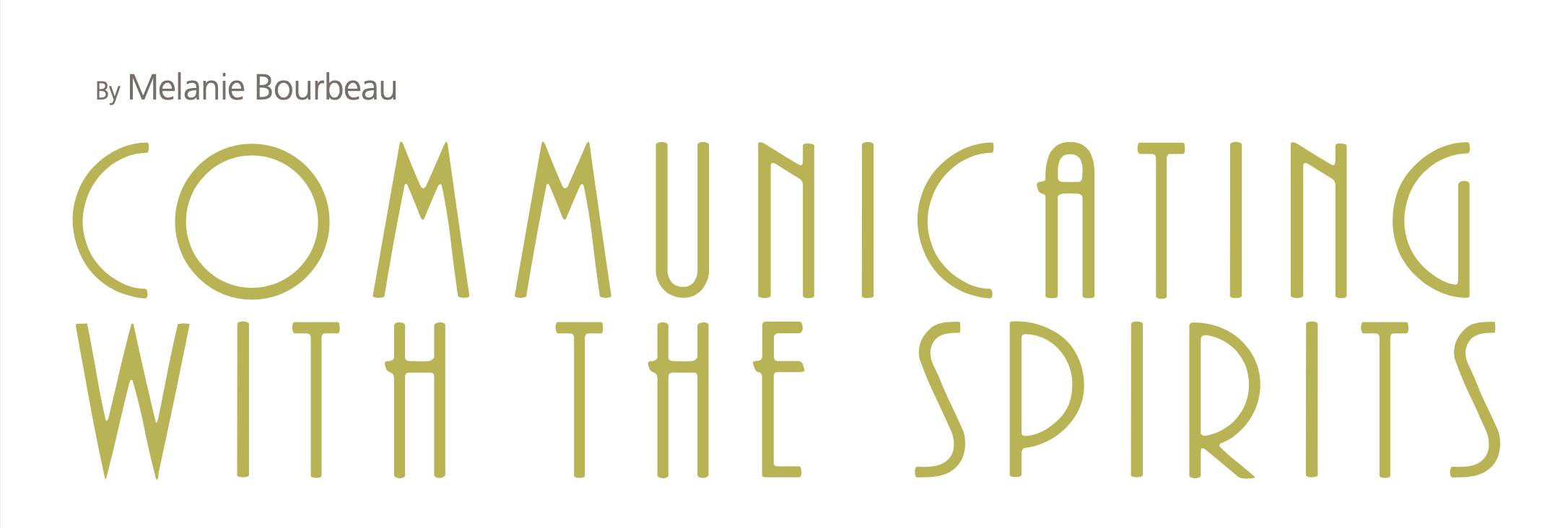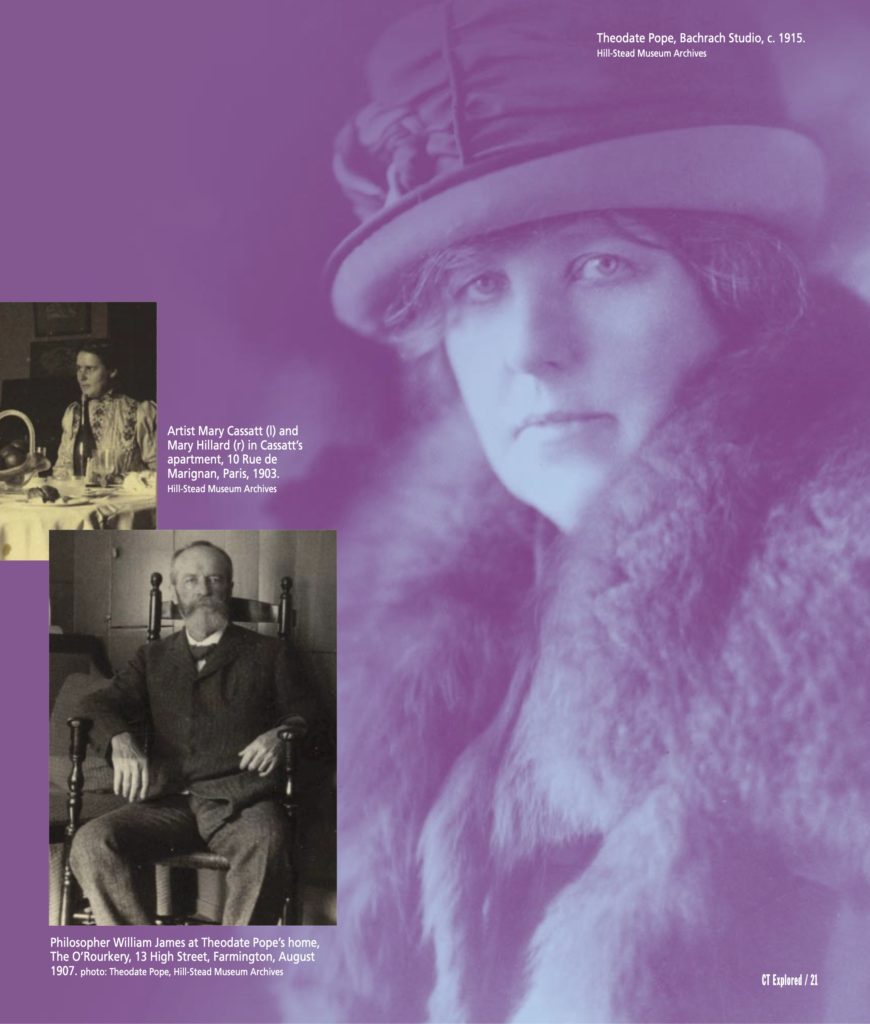
Theodate Pope, Bachrach Studio, c. 1915. Hill-Stead Museum Archives; (inset) Philosopher William James at Theodate Pope’s home, The O’Rourkery, 13 High Street, Farmington, August 1907. photo: Theodate Pope. Hill-Stead Museum Archives
(c) Connecticut Explored Inc. Winter 2020-2021
Subscribe/Buy the Issue!
In 1938 architect and founder of Hill-Stead Museum Theodate Pope Riddle of Farmington enjoyed an excursion through Europe and England with her retired-diplomat husband John Riddle. While in London she participated in three sittings with trance mediums, continuing an avocational interest in spiritualism that had lasted 34 years. These were the final sittings of nearly 75 in which she had participated. On September 9, Riddle met with “Mrs. Nash,” an affiliate of the London Spiritual Alliance, who “contacted” two individuals near and dear to her: her father Alfred Pope, who had died at age 71 in 1913, and Gordon Brockway, the first of her three legal wards who, at 4 years old, died from polio in 1916.
A 22-page transcript of the sitting in Hill-Stead Museum’s archives details the conversation Riddle had with, and about, her loved ones. During the session, through a process known as “automatic writing,” the medium penned seemingly random letters, and without Riddle’s prompting, two names began to be spelled out—Alfred and Gordon. The medium revealed that Alfred Pope was with “a boy grown up in the spirit that is your son.” This is remarkable in that it suggested the two were together in the spirit world even though their earthly lives had not coincided.
Contacting friends and loved ones is one of the threads that connect many of Riddle’s sittings, but she was equally interested in the scientific study of life after death, which she believed could be “proven” through communication with departed souls. Riddle’s interest in spiritualism is documented through her diaries beginning in the fall and winter of 1900 – 1901, when she began reading books on the subject. “All the time at odd moments I am busy reading the Proceedings of the [Society for Physical Research]. I … read them with the most intense interest,” she wrote in her diary on October 17, 1900. She noted that she was also reading Edmund Gurney, Frederick Myers, and Frank Podmore’s Phantasms of the Living (Trubner & Co., 1886).
In the mid-1800s a wave of popular interest in spiritualism spread across the United States and Europe. By the end of the century several forms had developed, some quite religious and others rather carnival-like. [See “The Pine Grove Spiritualist Camp,” Spring 2020, and “The Spirits of Reform,” Winter 2008/2009.] Séances and spirit circles attracted people from all strata of society. “Scarcely another cultural phenomenon affected as many people or stimulated as much interest as did spiritualism” during the 19th century, writes R. Lawrence Moore in In Search of White Crows (Oxford University Press, 1977). It is not surprising that Riddle was caught up in the trend. But her interest was more than passing fancy or a source of entertainment. Eventually she would become an intimate of major figures in the movement.
In the 1890s, some intellectuals and scientists began to study spiritualist phenomena such as “trance” in an attempt to understand altered states of consciousness, the apparent ability of some people to communicate thoughts without using language, and what happens to the human personality after death. The investigators called themselves “Psychical Researchers.” Philosopher William James, older brother of novelist Henry James (who was a friend of Riddle’s), was the most prominent American in the group.
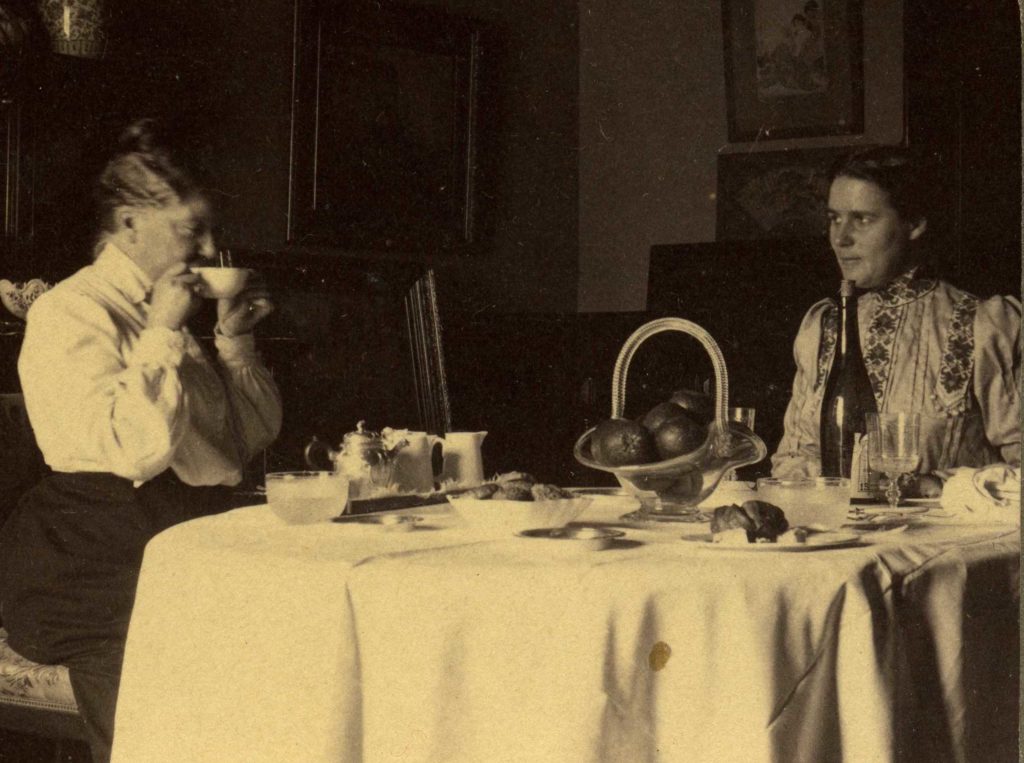
Artist Mary Cassatt (l) and Mary Hillard (r) in Cassatt’s apartment, 10 Rue do Marignan, Paris, 1903. Hill-Stead Museum Archives
In February 1903 Riddle and her good friend Mary Hillard visited the artist Mary Cassatt at Cassatt’s home in Paris. The three had a common interest in spiritualism and discussed, according to Riddle’s diary, what was currently happening in the scientific investigation of psychic phenomena, the mediums with the best reputation, and current books on the subject of immortality. Before leaving France, Riddle bought Meyers’s newly-published two-volume Human Personality and Its Survival of Bodily Death and found it so fascinating that she sent Cassatt a copy. Cassatt was equally enthusiastic, writing to Riddle, “What a book! I am simply overcome with the last chapter of the second volume.” The trio had also discussed the work of the Society for Psychical Research and Dr. Richard H. Hodgson’s work in Boston with the famed American medium Leonora Piper. Cassatt encouraged Riddle and Hillard, in a letter dated November 30, 1903, to arrange a sitting. “In the evenings when I sit here all alone, I read the Myers book. The more I read it the more I admire, & the more I hope—I wonder if you have seen Hodgson and Mrs. Piper, I think Myers would approve of that for you—.” They would take Cassatt’s advice in early 1904 after Hillard’s brother’s death late in 1903.
Trance mediums such as Piper and Nash used intermediary spirits, known as “controls,” in their communication with sitters. The idea was that the spirit took control of the medium and answered questions through him or her. It was not uncommon for mediums to speak in a voice or use phrasing that was not their own but rather that of the control. Nash’s control was “Topsy,” the spirit of an eight-year-old girl. Piper, at the time of Riddle’s sittings, used two controls: “Rector,” a wise and sympathetic elderly Scotsman, and “Imperator.”
Hillard, in notes in the museum’s archives, described a typical sitting with Piper:
Mrs. Piper seats herself before a low table with pillows, and beside a second low table. Within a few moments she has passed into a trance state, her head falling forward onto the pillows. Her hand presently falls onto the little table by her side, a pencil is put into it, and the writing begins. The hand has many times written the statement that a special spirit called ‘Rector’ acts as amanuensis and does all the writing… The hand writes, then turns for a response to the sitter with the palm of the hand turned toward the sitter’s mouth, the sitter being at the side of [the]table. The sitter talks into the palm of Mrs. Piper’s hand as into a telephone. The hand then turns and holds itself in a similar position at the front of the table as if someone were also standing or sitting there and in order for the hand to understand the message to be written must talk to the hand as the sitter had done. Then the hand writes a response to what was said by the sitter. …
Riddle quickly progressed beyond neophyte participant to de facto member of the team. “Dr. Hodgson had trained me in taking notes,” she noted in an unpublished 1937 memoir in the museum’s archives. In January 1906 she wrote a description of how the sittings were recorded and transcripts prepared. “The writing is often difficult to read but nothing is left to the imagination because I read aloud to ‘the hand’ everything, and if I miscall a word the hand dissents and immediately rewrites it.”
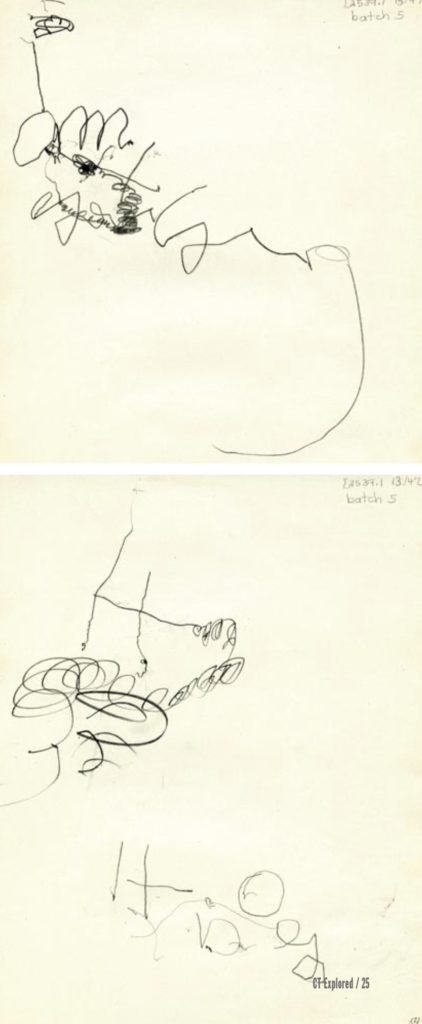
Examples of Mrs. Piper’s automatic writing when the spirit of Dr. Richard Hodgson was first contacted, December 1905. Hill-Stead Museum Archives
Piper was born in New Hampshire in 1857. She first experienced psychic phenomena when she was eight years old, according to Deborah Blum in Ghost Hunters: William James and the Search for Scientific Proof of Life After Death (The Penguin Press, 2006). William James learned of Piper in 1885 after his mother-in-law attended one of her trance sittings, according to Linda Simon in Genuine Reality, A Life of William James (Harcourt, Brace & Company, 1998). Impressed by what he heard, he convinced Piper to consent to be studied. James attended several sittings and reviewed testimony from the sittings of others. On at least five occasions he hypnotized her, until he was satisfied that her trance state was sufficiently distinct from her reactions under hypnosis. Though impressed, he realized that even his own reports about Piper conveyed little of the intense certainty of her authenticity that he felt when in her presence. During one of his lectures in 1890, he remarked, “To upset the conclusion that all crows are black, there is no need to seek demonstration that no crows are black; it is sufficient to produce one white crow; a single one is sufficient….my own white crow is Mrs. Piper.” James was the first among the psychical researchers to study her. While James, Hodgson, and others believed her credible, there were those, of course, who were convinced she was a charlatan.
Piper agreed to an exclusive arrangement with Hodgson and the Society for Psychical Research (SPR) in the late 1880s. All appointments had to be made through Hodgson, and all sittings would be strictly observed. Piper was paid a regular, fixed sum. The sittings, three per week from fall to early summer, were held in a small, barely furnished room at the SPR office in Boston. Contrary to popular imagery and portrayals, they were held in the morning in full daylight, rather than at night in a candle-lit room, to lessen the possibility of trickery. Participants were introduced to Piper as “Miss or Mr. Smith,” and Piper never knew in advance if Hodgson was attending alone or bringing a guest, Hillard recorded in notes in the museum’s archives.
Riddle and Hillard began sittings with Piper in early 1904 in an attempt to reach Hillard’s recently deceased brother. Each sitting began with Rector and/or Imperator offering the greeting “Hail,” scrawled onto a piece of paper by Piper. Riddle was at first skeptical. She and Hillard tested Piper by asking questions only Hillard’s brother would know. It took a few months of sittings before Riddle was convinced that the spirit of John Hillard lived on, as she recorded in her notes about the various sittings. In December 1907, three years after his death, his sister asked at one sitting, “Do you know in what Theo and I are interested?” The reply referenced Westover School, which Riddle was designing for Hillard. John’s spirit eventually communicated, “[Riddle] is a trump Mary if you only knew it. She is one in a thousand.” In life John had often described Riddle as a “trump.”
Riddle also attempted communication with others who had been important to her, such as her grandmother and Sarah Porter, founder of Miss Porter’s School, which Riddle attended in the late 1880s. In June 1907 Riddle met with medium Minnie Meserve Soule, a.k.a. “Mrs. Chenoweth,” whose first words to Riddle were, “Do you know Birdie?” Riddle replied, “Why that was my childish nickname!” Only close family members knew this was what grandmother Theodate Stackpole Pope had called her granddaughter. In addition to personal contacts, Riddle sometimes sought relationship advice, especially concerning one particular beau, and she and Mary Hillard also sought health advice from a spiritualist doctor, Sandra Katz notes in her biography of Riddle, Dearest of Geniuses (Tide-Mark Press, 2003).
The psychic event that most convinced Riddle and James that there was life after death was the untimely loss of their friend and colleague, Richard Hodgson on December 20, 1905, at age 50. Hodgson believed that “the departed may under certain conditions reveal themselves to those remaining on earth, but … much less frequently than spiritualists believe,” his obituary noted. Hodgson had often claimed that if he died while Piper was alive, he would find a way to communicate with her from the other side. He left papers containing information with which to test his spirit personality, should the opportunity arise. James and others from the SPR, along with Riddle and Hillard agreed this was the perfect opportunity to prove the validity of spiritualism. Just one week after Hodgson’s death, James and Riddle met with Piper. Piper started the session by scribbling three short words: “Hodgson I Am.”
Riddle recalled in her 1937 memoir:
In a few moments, however, the pencil dropped from the medium’s hand and her arm began making violent angular motions, and I had to push back from the table to avoid being struck. When this evidence of exorcism had somewhat quieted down, I placed a pencil between her fingers, and her hand made one strong perpendicular line and then another. These two lines were then crossed by a horizontal line, thus forming a “H.” The pencil made scratches all over the paper like a chine gone wild, but at the bottom of the page again became quiet and wrote “odgson” and the pencil dropped. I said: “Is this my friend?” and placed another pencil between the medium’s fingers, and Rector’s quiet writing was resumed. He wrote: “Peace, friends, he is here, it was he but he could not remain, he was choked. He is doing all in his power to return.”
Several more sittings yielded a message for Riddle. On January 16, 1906 Hodgson communicated through Piper: “You are Pope [her family name]. I see you.” Weeks later, in mid-April, Riddle questioned Hodgson’s spirit about the sealed envelope he’d left prior to his death. As recorded in the sitting transcript in Hill-Stead’s archives, after several attempts the spirit accurately recited the message Hodgson had left in the envelope: “I am grateful to God for the privilege to live. … And when I go over to the other side I will prove my existence to friends in the physical world by reproducing this letter.”
In June 1906 Riddle gave $25,000 to the American Institute for Scientific Research of New York, a new psychical research organization created by James H. Hyslop. Hyslop was Hodgson’s successor as Piper’s manager at SPR in Boston. Hyslop had indicated he wanted to leave SPR to create a new organization that relied on a more rigouous scientific approach. He appointed Riddle to its board, the only woman. She served until 1915, when she lost faith in Hyslop’s research techniques and because she felt he misappropriated her funding.
Hyslop was also antagonistic toward Edwin Friend, a young spiritualist in whom Riddle and others saw great academic promise for the field. Riddle proposed, with Friend, starting a rival organization in Boston called the Organization of the Massachusetts Society for Psychical Research. Friend and Riddle made plans to meet with officers of the British society to convince them to break ties with Hyslop and turn their support to their new organization. The pair set sail on May 1, 1915 on the RMS Lusitania which sank on May 7 after being hit by a German torpedo. Friend did not survive.
By the late 1910s, Riddle had created a $500,000 fund at Harvard University to promote the advancement of human knowledge in psychical research. For a year and a half, her funding supported another promising young psychical researcher at the university, Leonard Trolland. When World War I-related projects became a higher priority at the university, a sizable portion of her gift was returned to her, but not before she became disillusioned with her latest protégé’s mostly negative results of telepathy investigation. Riddle bemoaned Trolland’s dependence on machines and omissions of the human emotional element. “Until experiments are tried in which the agent’s mind is excited, in which case it can be compared more or less justly to a dynamo, experiments are doomed to failure,” she wrote in a letter to Trolland on October 12, 1917.
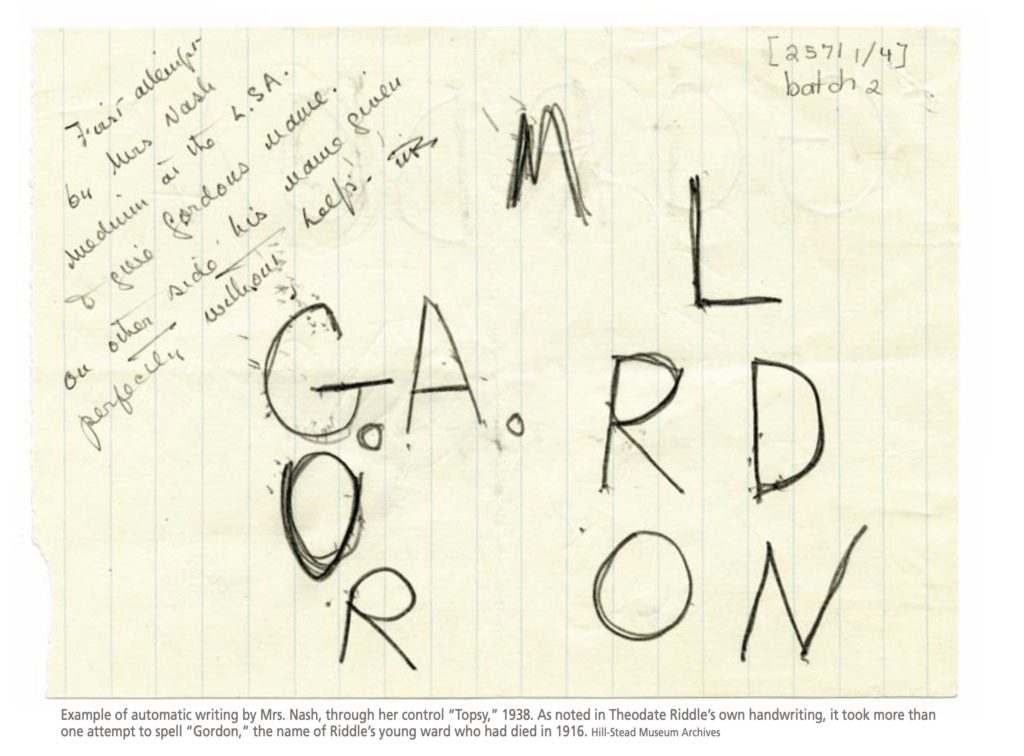
Example of automatic writing by Mrs. Nash, through her control “Topsy,” 1938. As noted in Theodate Riddle’s own handwriting, it took more than one attempt to spell “Gordon,” the name of Riddle’s young ward who had died in 1916. Hill-Stead Museum Archives
Meanwhile, as work on Avon Old Farms School took precedence for her, Riddle’s participation in psychical research waned. But once the school-building was behind her, she turned again to a comforting place of spiritual communications. Her final sittings were in London in 1938, when three different trance mediums seemingly were able to conjure her father, beloved “godson” Gordon, and other dear friends. Reflecting years later on her experience when Hodgson’s spirit was summoned by Piper, she wrote in her 1937 memoir, “This may be of interest some time, if and when survival is proven to be a fact. For myself, I am inclined to believe that it will never be proven in the same manner as two and two make four. I am inclined to think part must still rest upon faith, and that if we as individuals and nations suffer enough, we are bound to return to a deep faith.”
Of the approximately 13,000 letters and documents in Hill-Stead Museum’s archive, the greatest single-subject volume is that pertaining to Riddle’s involvement in psychical research, including transcriptions of sittings and correspondence from 1906 to 1945 about the business administration of various psychical research societies and her continued study of the movement. The museum’s library collection contains more than 80 volumes on the subject. As much as Riddle believed, or wanted to believe, in communication with the beyond, she never held seances at Hill-Stead. But her experiences, particularly encounters with those she loved and cared for dearly, appear to have given her a sense of peace and acceptance while in the physical world. What message would she send us today if we could ask?
Melanie Bourbeau is curator of Hill-Stead Museum. She last co-wrote “Site Lines: Golf at Hill-Stead,” Summer 2018.
Explore!
“The Spirits of Reform,” Winter 2008/2009
“The Pine Grove Spiritualism Camp,” Spring 2020
“Alfred Atmore Pope’s Art Collection at Hill-Stead Museum,” Summer 2009
Hill-Stead Museum
35 Mountain Rd, Farmington
860-677-4787, hillstead.org
GO TO NEXT STORY
Subscribe to receive every issue!

